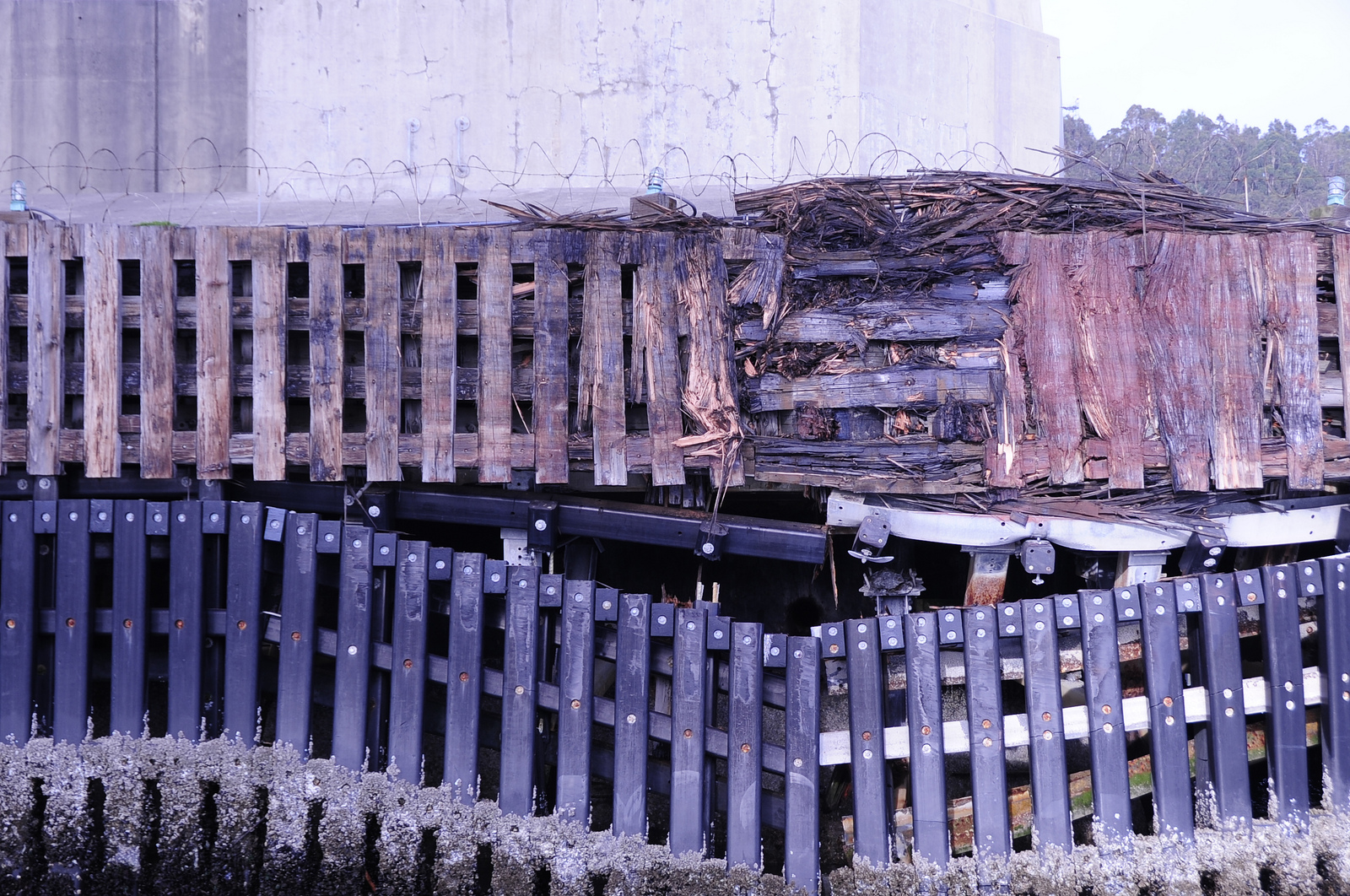A watchdog environmental group is seeking to close a loophole in best maritime practices, a day after an oil tanker nicked the base of the Bay Bridge.
Deb Self, executive director of San Francisco Baykeeper, noted that the Bay Bridge is not on a list of nine "critical maneuvering areas," where industry standards advise that large vessels heavier than 1,600 tons should not be when the visibility is less than half a mile.
The Oakland Bar Channel is on that list, which means that the approaches to the Bay Bridge and Yerba Buena Island,are included in this critical area. But the actual Bay Bridge is not.
Self, who also sits on the San Francisco Harbor Safety Committee that provides this critical list, feels that this gap should be addressed, in light of the Overseas Reymar scraping the bottom of the Bay Bridge Monday about 11:20 a.m. and bringing up fears that worse could have happened.
"For example, that shipping channel from the Bay Bridge to the Oakland Estuary is definitely covered by this visibility restriction," Self said. "However it looks like maybe the Bay Bridge itself is not part of the restrictions."
The list is an advisory one only, and applies to large vessels sailing in low visibility. The accident on Monday occurred in visibility that was deemed a quarter mile.
No injuries and no environmental damage was reported when the tanker, piloted by Guy Kleess, struck the base of the bridge.
But the National Transportation Safety Board on Tuesday began investigating the incident on Tuesday, naming Barry Strach as the lead investigator. The board also called the accident a "major marine casualty," because the fender of the vessel's hull and the base of the bridge were damaged with costs totalling more than $500,000.

The vessel on Tuesday was put "on hold," meaning that the tanker will stay put in the bay until investigators deem it safe to travel again.
Local
Self acknowledged that closing the loophole is largely semantic; the Oakland Bar Channel is already on the list, and the harbor safety plan is only an advisory one.
Still, she said: "It seems that there's a possibility that just a slight change to the rules will bring the bridge into a critical maneuvering area."
Self plans to bring up this loophole at an upcoming safety harbor meeting, likely next month.
All of this effort, however, is to prevent what happened in November 2007, when a ship called the Cosco Busan struck the Delta Tower of the Bay Bridge in thick fog.
Investigators in that case found that pilot John Cota was impaired from his use of prescription pharmaceuticals. He was sentenced to ten months in federal prison. Then-Gov. Arnold Schwarzenegger declared a state of emergency, releasing a flow of funds to clean up the major environmental damage.
In this case, Coast Guard Lt. Cmdr. Rick Foster told NBC Bay Area on Tuesday that investigators are still looking at what caused this accident.
"Visibility in the Bay Area is always a challenge," he said. But he quickly added that many vessel pilots know how to navigate the weather and fog without any problems.
IF YOU ARE INTERESTED: Here is the full list of the critical maneuvering areas identified by the San Francisco Harbor Safety Committee. Following these guidelines are considered "best practices" for the maritime industry.

• Redwood Creek
• San Mateo-Hayward Bridge
• Oakland Bar Channel*
• Islais Creek Channel
• Richmond Inner Harbor
• Richmond-San Rafael Bridge, East Span
• Union Pacific Bridge
• New York Slough, up-bound
• Rio Vista Lift Bridge
*The Oakland Bar Channel is identified due to cross currents and its proximity to the Bay Bridge and Yerba Buena Island.



